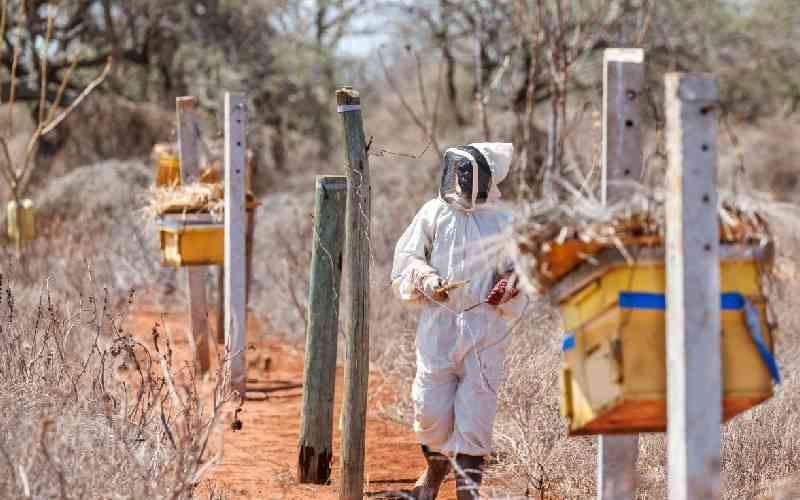by Vincent Moracha
At the Kinamba Catholic Church in Ng’arua Laikipia West, Horace Kamau sat put last week.
He was among residents listening to stories on how wanton destruction of natural resources has been a key issue for a long time in Kenya.
The residents were among the unsuspecting villagers who destroy the rare sandalwood tree in parts of Laikipia, Baringo and East Pokot, to sell at Sh10 to middlemen.
He reckoned the likely compensation of encroachers of the country’s largest water tower—Mau forest—could not have come at a better time. On this occasion, however, the Government was not here to issue orders but rather spell out news that would soon changes their lives.
Under a partnership, they were told the State in collaboration with Denmark was launching a Sh20 million Environmental Conservation and Livelihoods Improvement programme, an environment-friendly project that would improve the lives of the community.
The Community Development Trust Fund (CDTF), an arm of the European Union will manage the project.
Mr Joseph Ruhiu, the CDTF programmes manager, said the project will promote the sustainable use of productive land through agro-forestry and soil conservation technologies.
"It will help mitigate the perennial human and wildlife conflicts in this area by providing profitable and sustainable enterprises to residents," Ruhiu said.
He said the funds will be channelled to the Fund by the Danish Development Agency (Danida).
For the project to hold, Ruhiu said, CDTF has arranged a number of workshops to sensitise the local community on the advantages of the project. While Kamau and others were keen on the news, they were not aware that the community had contributed Sh4.6 million to the project.
CDTF’s analysis shows the residents will reap from the project.
The big boost
They stand to benefit from the establishment of five community fruit/tree nurseries with a total capacity of 250,000 seedlings both exotic and indigenous and support 15 other smaller ones, from woodlots comprising indigenous, exotic and fruit trees within public institutions such as schools, health centres and churches, and reduce their dependence on firewood by using the Fund’s energy-saving jikos.
Other programmes that will improve the lives of the local community include: controlling soil erosion in seriously degraded areas covering about 25,000 metres of terraces by constructing 30 gabions, planting trees, grass and fencing, protection of eight natural springs, watering points, and sanitation facilities among others.
Stay informed. Subscribe to our newsletter
Conservation of sandalwood
The Fund will create awareness on the potential benefits of conserving sandalwood.
The Government banned trade in sandalwood in 2007 but drought in the area force people to harvest the tree for money.
Ruhiu says CDTF technical team will train 20 groups on tree nursery establishment and management, agro-forestry practices and soil erosion control methods.
Capacity building will ensure the likes of Kamau undergo group training to run small enterprises with minimal adverse effects to the environment.
For livestock farmers, CDTF will train on best crop and livestock husbandry practices including marketing as well as developing market linkages outside their area. The project could also spell the advent of peace in the area as the Fund collaborates with the Provincial Administration.
[email protected]
 The Standard Group Plc is a
multi-media organization with investments in media platforms spanning newspaper
print operations, television, radio broadcasting, digital and online services. The
Standard Group is recognized as a leading multi-media house in Kenya with a key
influence in matters of national and international interest.
The Standard Group Plc is a
multi-media organization with investments in media platforms spanning newspaper
print operations, television, radio broadcasting, digital and online services. The
Standard Group is recognized as a leading multi-media house in Kenya with a key
influence in matters of national and international interest.
 The Standard Group Plc is a
multi-media organization with investments in media platforms spanning newspaper
print operations, television, radio broadcasting, digital and online services. The
Standard Group is recognized as a leading multi-media house in Kenya with a key
influence in matters of national and international interest.
The Standard Group Plc is a
multi-media organization with investments in media platforms spanning newspaper
print operations, television, radio broadcasting, digital and online services. The
Standard Group is recognized as a leading multi-media house in Kenya with a key
influence in matters of national and international interest.








